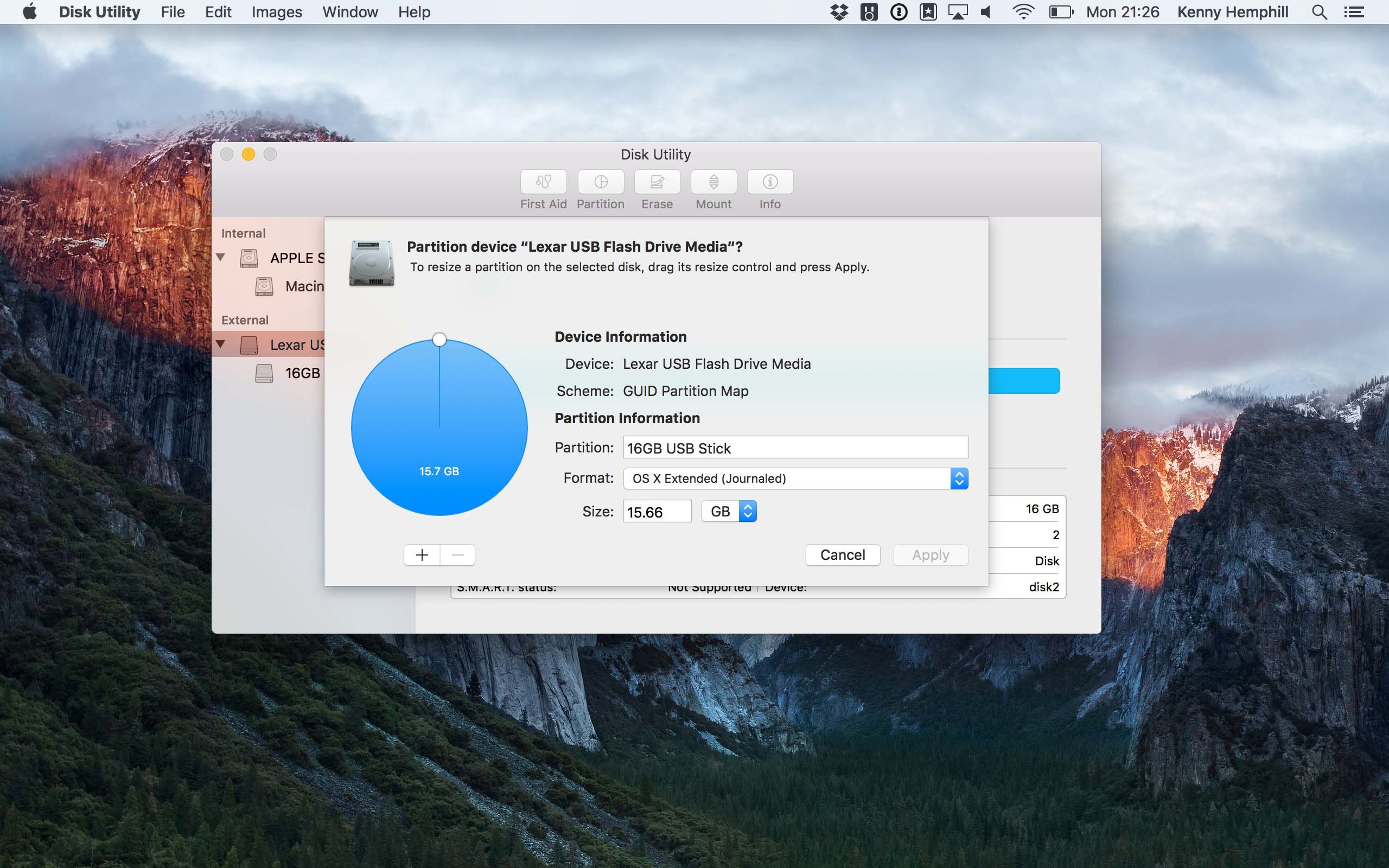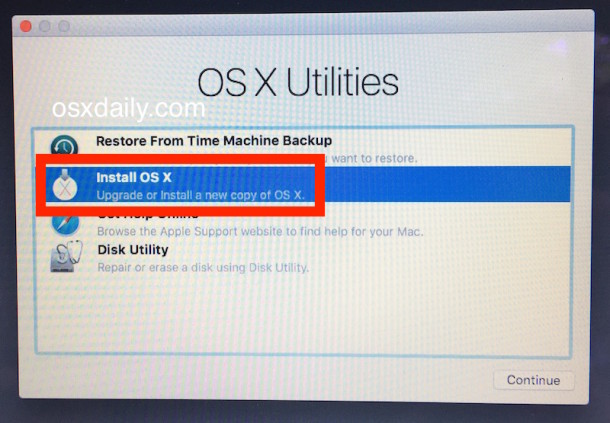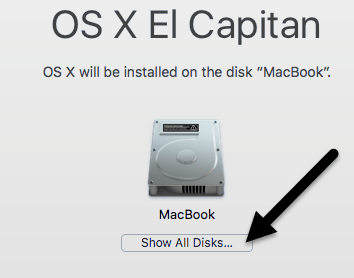Install Mac Os El Capitan On External Drive
If your Mac suddenly refuses to boot up properly, you might need a bootable macOS USB installer to make repairs. But how do you create such a disk if all you're left with is a Windows 10 computer? Fortunately, there's a great tool that you can use for free to create bootable macOS media on a USB drive in a Windows 10 environment. This article shows you how to download a macOS DMG file, format a USB drive using a GUID Partition Table, burn the DMG to the drive and boot your Mac from the USB. All the steps except the last one are done on a Windows 10 machine.
Part 1: Download macOS or Mac OS X DMG File
Jun 22, 2020 I've forwarded the early 2008 machine drives (unaware than getting the installer is going to be so challenging). I am unable to open the El Capitan package to get the installer on my 2019 machine. I just need a bootable version of El Capitan, or to install on an external hard drive so I can reboot my early 2008 machine. One easy way to do this is to partition the Macs hard drive and install OS X El Capitan onto that new separate partition, this will insure that OS X El Capitan 10.11 remains away from the stable build of OS X 10.10 or 10.9, and allows the user to boot between the Mac OS releases as they see fit. Jan 14, 2021 As you know that Mac OS EL Capitan is the newest version among Mac. In here just follow my steps to create a bootable USB installer for your Mac. Is the twelfth major of the Mac operating system. How To Create Bootable Usb For Os X El Capitan 10 11 6; How To Create Bootable Usb For Os X El Capitan Download.
The first step is to get the DMG disk image file for the version of macOS that you want. You can get a copy of the latest macOS version from Apple download portal or App Store here. There are also several other direct download sites that offer various versions of Mac OS X in DMG format rather than the standard APP format that runs on Mac. Since you're working in a Windows environment, you need the DMG rather than the APP file.
macOS DMG Download Link:
Part 2: Easily Create a Bootable macOS USB from Windows 10/8/7 PC
You have now formatted the partition of USB drive. It's time to download UUByte DMG Editor for Windows. Although this is a premium software, you can use the initial free trial period to create a bootable macOS USB on Windows 10. After installing the application, follow the sequence of steps shown below:
Updates (Dec 8, 2020): The latest version of UUByte DMG Editor is able to format the USB automatically.

Step 1: Right-click the software icon on desktop and select 'Run as Administrator' from the contextual menu. Choose 'Run' when prompted.
Step 2: Insert your formatted USB drive, and click 'Burn' tab on the main screen.
Step 3: Click 'Browse' button to import macOS dmg file into the program. And select the USB drive name from the second row. You can also set a volume labe for that USB drive.

/SelectDisk-56a5d51f3df78cf7728a0fc9.jpg)

Step 4: Click 'Burn' button at the bottom to start the process. You will see a progress bar and wait around 10 minutes to get it done.
Step 5: Once the progress bar is at 100%, a bootable macOS USB is ready. After that, you can use that USB drive for installing macOS.
This is one of the easiest way to create a bootable macOS USB on a Windows PC. The steps are simple and instructions are pretty clear.
Part 3: Format USB Drive to GPT If Failed
If the USB drive created in above step was not seen as a bootable device on your Mac, then you need to take an addtional step before burning. That's formatting the USB to GPT.
Mostly, the USB drive was formmated to FAT32 in default when being shipped out from the factory. However, FAT32 can be only used for installing OS with legacy BISO, which doesn't work for macOS. So the next step is to format your USB drive in the GPT partition style in order to burn installation files to the desired USB drive. You can do this in Command Prompt as admin. In elevated Command Prompt (Ctrl+Shift+Enter), input the following series of commands followed by Enter after each line:
Diskpart
List disk
Select Disk X (X stands for the USB drive name that appears after the previous command)
Clean
Convert GPT
Create partition primary
Part 4: Boot Mac from macOS USB Drive for Installation
Now remove the USB drive and insert it into the Mac computer. To boot from the disk, you need to hold down the option key when you hear the boot chime. This will take you to the Startup Disk Manager, where you should be able to see the USB drive. It might have a different name, but as long as it is bootable, you'll be able to see it there. Once you select it, the computer will boot from the disk and the macOS installation will begin.
Troubleshooting
Flashing Error: You might receive a flashing error message at the end of burning process. Please don'y worry and ignore this error. The USB becomes a bootable disk and you can use it to install macOS even this error pops up.
About Official EI Capitan DMG: There has a serious bug in the official release of OS X El Capitan, which contains .pkg installer only. The burning process will fail for sure. Please use this modified EI Capitan DMG file instead, which was approved a good option.
Registration Failed: Please make sure the computer is connected to Internet and no proxy or VPB is running during registration. If the problem still exists, please send an email to support team asking for a new code.
Conclusion
Install Mac Os El Capitan On External Drive Free
The whole process might look a bit complicated if this is your first time, but just follow the instructions in this article and you should be fine. That being said, you need to be careful when downloading the DMG file and formatting your USB drive. If you don't do these two steps correctly, the output drive from the UUByte DMG Editor software won't be bootable, which means you can't install macOS from that USB drive, and you may need to do the whole thing over again.
With the release of El Capitan, Apple took the opportunity to give Disk Utility a facelift. You can still use the software to format a startup drive—it’s similar to the steps in the previous version.
This how-to goes through the steps of formatting a startup drive using Disk Utility 15 in El Capitan. If you’re using an older version of Disk Utility, the steps are here.
1. Connect your drive
To format an external storage device, connect it to one of the ports on your Mac. Turn the drive on, and make sure it appears in the Finder.
If you’ve already installed El Capitan and you want to format you Mac’s internal drive, you can boot into Recovery Mode to format the drive. To boot into Recovery mode, start up your Mac and hold down Command-R. You should see a window labeled OS X Utilities. (Note: if you format your Mac’s internal drive, this will erase all of the data on the drive, including your apps, file, and the operating system.)
2. Open Disk Utility
You’ll use OS X’s Disk Utility app to format the drive. Locate Disk Utility in Applications > Utilities and open it.
If you booted into Recovery mode, select Disk Utility at the bottom of the window (see below).
3. Select the storage device in Disk Utility
Disk Utility’s left pane shows the storage devices connected to your Mac. Underneath each device are the drive’s partitions. Select the device you want to format. Then click the Erase button at the top.
If the Erase button is dimmed, it means the drive you want to format is in use and you need to boot off another drive or into Recovery mode, which was described in step 1.
4. Name and Format
A dialog box will appear. You need to enter a name for your storage device.
Click the pop-up menu for Format, and you can select one of the formats. The default selection is OS X Extended (Journaled); if you want a layer of security, you can go with OS X Extended (Journaled, Encrypted), which will encrypt your storage device. (If you don’t see the Encrypted options, that’s probably because the drive you are formatting is currently not using a GUID Partition Map. Select OS X Extended (Journaled), proceed to step 5, and then come back to step 4, repeating the step but with an Encrypted option selected.)
The “Case-sensitive” formats allow for file names with capital letters to be different from lowercase letters. So, for example, three files named FILE, File, and file can exist in the same folder. You probably don’t need to use a Case-sensitive format.
MS-DOS and ExFat are PC formats. Since we’re formatting a Mac startup drive, you can ignore these two.
How To Install El Capitan On External Drive
5. Scheme
Can I Install Macos On External Drive
There’s a third selection you need to make called Scheme. For an Intel-based Mac running El Capitan, select GUID Partition Map. There are two other options you can ignore: Master Boot Record is for Windows, and Apple Partition Map is for PowerPC-based Macs (remember those?).
Mac Os El Capitan 10.11 Download
When you click Erase, Disk Utility will erase the data, reformat the storage device, and mount the drive on your desktop. Click Erase when you’re ready to proceed. After a few minutes, your storage device will be ready for you to install El Capitan.